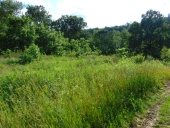I will be doing a video of my pastures as soon as weather allows. I would very much like any insight or ideas about doing this though.
currently I have 2 ewe sheep (getting more soon!) on two small paddocks which total about an acre. This was all quite overgrown weedy/brushy. paddock 1 got the sheep first and have since moved to paddock 2.
* In paddock 1 I am working on knocking down the remaining standing dead brush and will be going over the area by hand and overseeding.
* In paddock 2 the sheep will be staying a good while longer than needed to give paddock 1 time to start growing in the spring before returning them there. and because paddock 2 is so much more overgrown than paddock 1 was. I will need the added stomping work and eating down the weeds that I don't want growing back in so strongly. this paddock will also be overseeded then. there will be a lot of work hand chopping out the brush though.
the two paddocks only have a couple small trees started in them from the area not being mowed or anything. the trees are either black walnut or 'tree of heaven'. if they are walnuts I will leave them in, if not permanently but for the time being as they aren't big at all. If they turn out to be 'tree of heaven' those evil suckers are coming out and I will do whatever it takes to keep them out. there is a lot of those stupid pointless trees on the farm here and they colonize and nothing eats them.
now comes the real task.. The old goat pasture..
*its about 5acres give or take
*runs down a valley with about 80% of it being on one hillside and the other 20% being the little creekbed and up the other hillside
*a small creek runs down the valley. unsure if I can do much work on the spring area at the start of it. there is also several smaller inlets of water along the creek via water coming down off the hillsides.
*the pasture is about half overgrown brush and about half brushy/woods
*currently all one pasture fenced together. in the future I would hope to divide it at least into three sections probably.
*when my family had goats still this pasture ran 6 milk does, all the goat kids (about 2months in spring before selling), two bucks for two months in fall/winter. also two years had a horse mare and a gelding pony and a jersey steer. that was year round. So I know the land CAN handle quite a lot when it gets into a rhythm and I hope to get it even better with rotating the paddocks and variety of animals.
my main animal is the sheep. I aim to have a flock of about 20 adults, that's the plan right now anyhow. I need to get down the road to talk to the neighbor about buying two bottle calf steers from them. and if I come across a couple nice goats I would like to have two does for milk just for myself (unsure if standard or pygmy/Nigerians, really depends on what I find). and having had goats before I am not keeping animals that refuse to stay in a fence!

Trees that I know of in the pasture would be mainly black walnut. maybe a couple birch. and I know in one area there is a few with some kind of nuts but I don't know what kind of trees they are.
My idea right now really just being to thin out the trees, rotate the animals through, and overseed the area. overseeding the thinned woods area wouldn't be until fall or next year probably. I think a lot will grow in naturally once the trees are thinned though.
let me know what yall think. pics and video hopefully soon.








